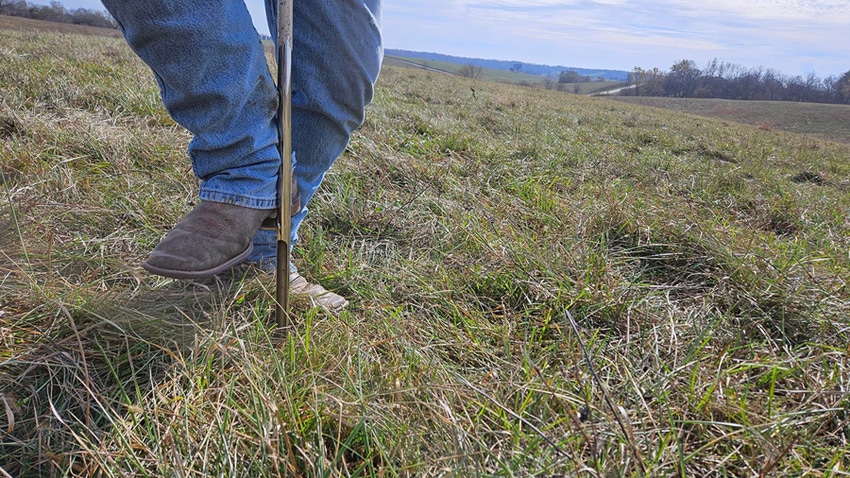April 3, 2024

Many pastures and hayfields in Iowa are continuing to recover from the dry conditions of 2023. One way to boost production and help forages recover from extended periods of extremely dry weather is to address fertility needs.
While fertilization for perennial forages is often overlooked, it’s just as vital as it is for row crops to maximize productivity, says Rebecca Vittetoe, an Iowa State University Extension field agronomist based in east central Iowa.
“It’s important to know what nutrients — particularly phosphorus, potassium and lime — your forages really need,” she says. “And the only way to know is to soil-test.”
Determine nutrient needs
You can find guidance at these ISU Extension publications:
Take a Good Soil Sample to Help Make Good Fertilization Decisions has information on soil sampling. Soils that test low or very low will benefit the most from P and K fertilization.
A General Guide for Crop Nutrient and Limestone Recommendations in Iowa can help you interpret your soil test results.
Vittetoe offers this example: “If your soil test for an alfalfa-grass pasture comes back as 20 parts per million P (Bray P1 test) and 130 ppm K (dry), we can look at Table 10 in the crop nutrient publication. We see that it would be recommended to apply 90 pounds of P205 per acre and 250 pounds K20 per acre, because both the P and K are in the low-testing category.”
Also, remember that forage harvest removes a lot of P and K. Table 2 in the ISU crop nutrient publication provides information to estimate crop removal rates.
“You want to put back at least what you take off,” she says. “However, if you can’t afford to apply a full removal rate, put on what you can afford. If you must choose between P and K, prioritize applying the K because forages have a higher K removal rate.”
If soils test very low or low in P or K, the recommendation is to apply P and K either in the early spring or in the fall to help boost forage production. For soils that test in the optimum category, the timing of P and K applications is more flexible.
Meet need for lime
Vittetoe reminds farmers not to forget about soil pH. It also impacts forage productivity and nutrient availability.
“In your soil test results, the soil pH indicates if you need to add lime, and the buffer pH tells how much lime is needed,” she says. “A soil pH of around 6 is recommended for grass-based hayfields and pastures. To encourage and maintain legumes, try to maintain a pH of 6.5 for clovers and birds-foot trefoil and a pH of 6.9 for alfalfa.”
Also in the ISU crop nutrient publication, producers should use Table 16 to determine lime needs, and follow the typical recommendations for the 2-inch or 3-inch depth when determining how much lime to apply in pastures.
Producers often ask if pelletized lime or regular ag lime should be used. “Both forms of lime are effective,” Vittetoe says. “However, pelletized lime tends to work faster than the ag lime, which tends to take longer. But ag lime has more longevity. Like P and K, application of lime is typically recommended in early spring or fall.”
Nitrogen considerations
If producers take a first cutting of hay off before grazing, they may want to apply a more aggressive nitrogen fertilizer rate compared to resting their pasture before turning livestock out to graze it. “If you have tall fescue, be cautious to not overfertilize with nitrogen,” Vittetoe says.
Suggested N application rates are found in Tables 1 and 2 in the publication Boosting Pasture Production. From a timing perspective, N can be applied either once annually or split-applied. Single applications typically are made in early spring, March or April. If split-applying N, apply in the early spring and again in August.
To minimize N losses, using ammonium sulfate or urea coated with a urease inhibitor is often preferred. “Liquid nitrogen can work well if producers want to apply herbicide with the fertilizer,” Vittetoe says. “However, be aware you may see nitrogen burn on the forage. Let the grass recover from this prior to baling or grazing.”
Producers are encouraged to contact their local ISU Extension field agronomist with any questions or concerns.
About the Author(s)
You May Also Like






